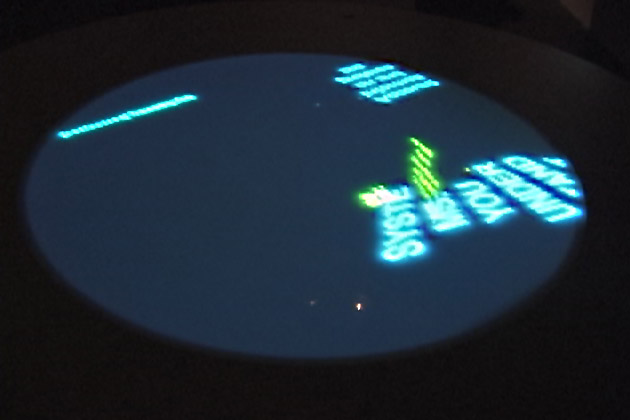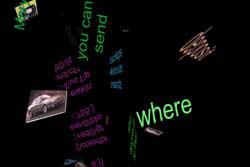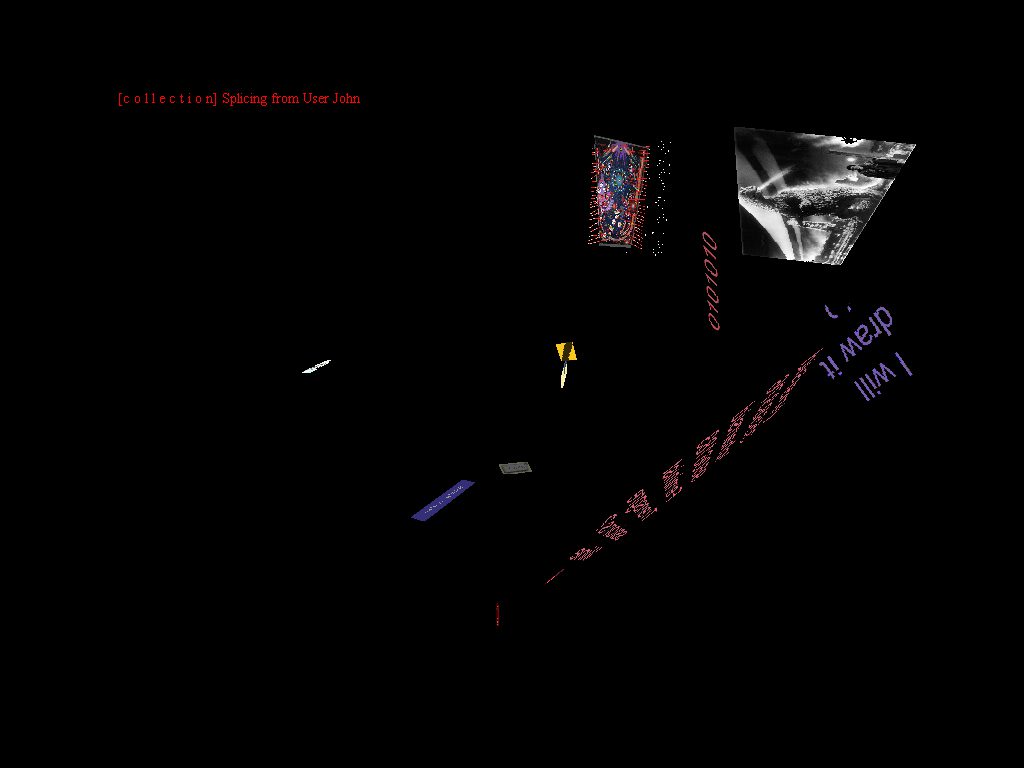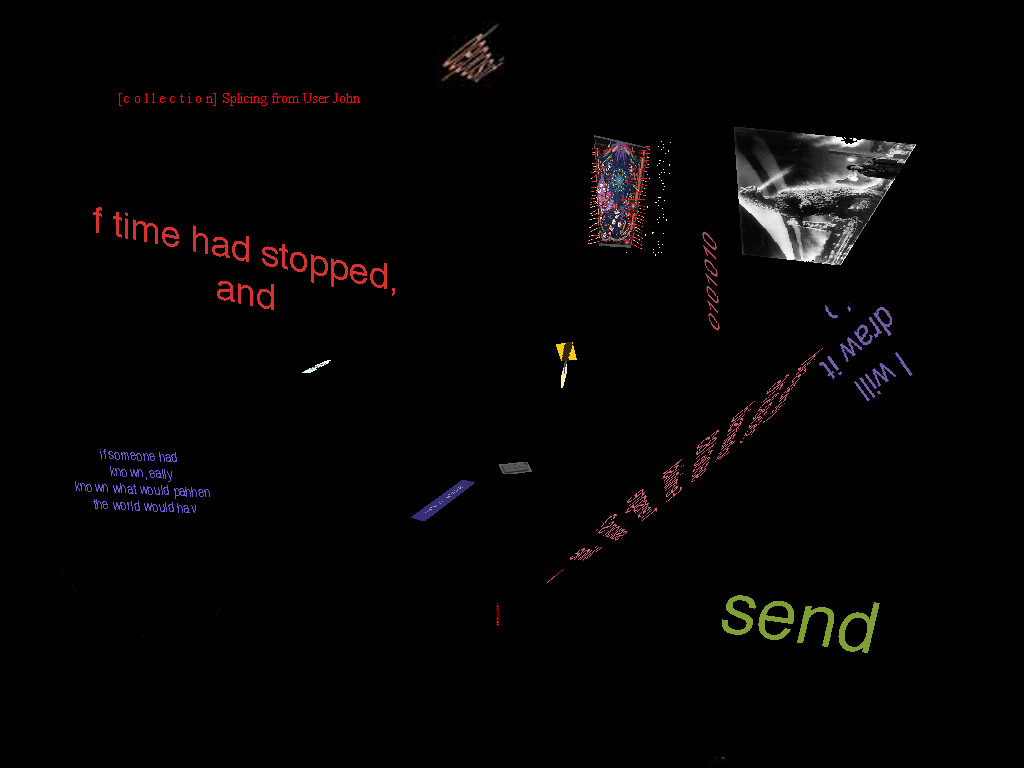






Video
[collection]
Network, hard drives
Dimensions variable
2002
[collection] is an application which collects material from users’ hard drives, gathers the material up on a centralized server and displays these items mixed from the various “donor” participant data sources. These collected bits and pieces of data — sentences from emails, graphics, web browser cached images, business letters, sound files– are used to create a continuously shifting map that has been likened to a visible, virtual collective unconscious.
[collection] explores notions of authenticity and authorship in the digital age, crossing the conceptual line separating an emotional letter from an html page or a cached help file. Further, [collection] helps us to consider the nature of memory as networks, and through its allegorical use of the internet it creates collective story space. By accessing participants’ unique experiences, the work creates spatial memory maps reflecting numerous overlapping relationships and cultures: the mechanics of the machine and techno-culture are visible through the thousands of invisible files necessary to run common software. Usually ignored and unknown to most users, these obscure bits of code, in the non-hierarchical selection process of [collection], are as likely to be highlighted as the family snap-shot or the email from one’s employer. Artifacts from the participants’ interactions with the machine and the their saved content are also reflected in these free-form maps.
[collection] creates a portrait unique to the user or group of users participating, dredging up long-forgotten snippets of material and reminding us memory can sometimes be a little too persistent. Remember the time, for example, you were interested in aikido, looking at risque images, purchasing a security system or shopping for engagement rings?
The software only runs on those machines voluntarily linked into the network. Rights of privacy are not violated, and data is not destroyed. Rather, the bits and snippets are copied into the ‘unconscious’ on the server to interact with other material. Our computers are dreaming together.
Exhibitions
- Habitar en (punto)net, Espai F, Mataró, Barcelona, Spain, October 24 – December 19 2003
- Whitney Biennial, The Whitney Museum of American Art, New York, New York, March 7 – May 26 2002
- The All Star Data Mappers, Future Screen 02: data*terra: investigating the mediation of data across technological, cultural, and physical terrains, Sydney, Australia, November 28 – December 7 2002
- Northwest Documenta, Pacific NW Contemporary Art, Salem, Oregon, April – May 2002
- ARTech: Art & The New Technology, Santa Cruz Art League, Santa Cruz, California, December 2002
Press
- Getlein, Mark. Living With Art. Discussion, Image of [Collection], college textbook, McGraw Hill 2004.
- Gauntlett, David and Horsley, Ross. Web.Studies. New York: A Hodder Arnold, 2004. Feat. [collection]
- Newsweek / Are Museums Obsolete? By Michael Rodgers
- I Love You Virus Show / Virus Charms and Self-Creating Code. By Alessandro Ludovico